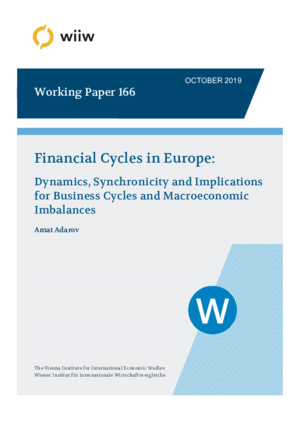Financial Cycles in Europe: Dynamics, Synchronicity and Implications for Business Cycles and Macroeconomic Imbalances
wiiw Working Paper No. 166, October 2019
44 pages including 24 Tables and 15 Figures
Using dynamic factor models and state-space techniques we quantify financial cycles for twenty European countries over the period 1960Q1–2015Q4 capturing imbalances across credit, housing, bond and equity markets. The paper documents the existence of slow-moving and persistent financial cycles for all countries in the sample, many of which also exhibit high cross-country synchronicity. Spillover analysis points at the significant role the global financial cycle and a common latent region-specific factor, the European financial cycle, play in shaping national financial market dynamics. Estimations using Bayesian panel VAR models to assess interactions between external and internal macroeconomic imbalances suggest that financial cycles are an important driver of business cycles and public debt dynamics, with much stronger shock transmission observed in the euro area and systemic European economies.
Disclaimer:
Research for this paper was financed by the Anniversary Fund of the Oesterreichische Nationalbank (Project No. 17044). Support provided by Oesterreichische Nationalbank for this research is gratefully acknowledged.
Keywords: financial cycles, macroeconomic imbalances, financial stability, business cycles, financial spillovers, panel VAR, Bayesian VAR
JEL classification: E44, F32, G15, F4.
Research Areas: Macroeconomic Analysis and Policy
